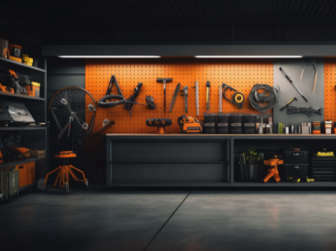There are very few things that can irritate someone who is passionate about their car more than some unsightly scratches. These scratches can be caused by accidents, vandalism and parking lot carelessness. To fix these types of scratches, panel beaters and experts could cost a fortune.
The most obvious way to ensure your car’s surface remains looking new is to invest in Scratch and Dent Cover. This insurance covers you in the event of minor scratches, dents and chips. In fact, RenewTech, a smart insurance offered through MotorHappy, includes cover for minor interior damage, too.
How to repair car scratches at home
We’ve put together a list of ways you can fix these minor scratches yourself, which could save you a lot of money:
That’s right, believe it or not, something as simple as toothpaste is one of the best scratch removing agents. To proceed with the toothpaste process:
- Make sure the scratched area is completely clean, as other dirt with the toothpaste could create more unwanted scratches.
- Use a microfibre cloth to apply a small amount of toothpaste to the scratched area.
- Using the microfibre cloth, rub the toothpaste in a circular motion and apply a decent amount of pressure until the toothpaste is spread evenly over the scratches.
- Rinse off the toothpaste, if the scratches are still visible then you can repeat this process two or three times.
Whitening toothpaste is the most effective scratch removing toothpaste, but any toothpaste should make the scratches noticeably better.
Another option is to purchase the best car scratch remover you can find. Here is the following process for using a scratch removal kit:
- • Wash the vehicle so there is no debris or dirt in the scratched area, remember that microfibre cloths are the best for drying the vehicle and removing unwanted dirt.
- Remember to purchase the correct scratch removal kit for your vehicle, as many cars have different types of paint, which require certain scratch removal kits. Your best bet would be to ask someone who works at the automotive shop which scratch removal kit is best for your car.
- Apply the scratch removing agents to a microfibre cloth or buffing pad supplied from the scratch removal kit.
- Gently rub the cloth or buffing pad to the scratched area, make sure to move in a circular motion as this is best for avoiding new scratches.
- Wipe away the excess product off the vehicle by using a completely clean cloth, you can repeat this process again if the scratches are still visible.
It’s important to always read the instructions of a scratch removal kit, in order to get the best results.
Before you consider this process, remember this technique requires some skill. When it comes to deep scratches, we recommend letting the professionals deal with it because a DIY job could get messy.
If you feel that you still want to repaint to fix the deep scratch, follow these steps:
- Wash the vehicle or scratched area to remove all dirt.
- Sand the scratched area to remove surface paint, 2000-grit Wrap is the best ratio for sandpaper to lightly remove the paint. Remember it’s important to sand in the same direction of the scratch to prevent causing other damage.
- Rinse off the dirt caused by the sandpaper, if the scratches are still visible, you can sand down the paint more until the scratches are not visible.
- Spray three coats of primer onto the sanded area, wait 5-10 min between each coat that is added.
- Apply two or three coats of paint which matches your car’s colour, check with your car’s manufacturer to buy the same shade of paint. You should wait about 10 to 15 minutes between each coat, to ensure the paint dries efficiently.
- Lastly, wax the area that has been resprayed after the paint has dried, a buffer pad works best for waxing.
Putting the brakes on drunk driving
The benefits of an extended car warranty


